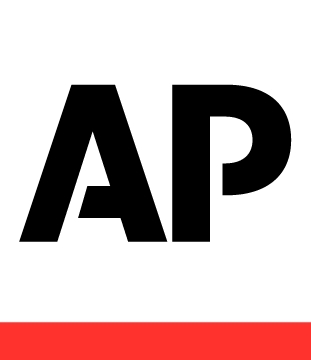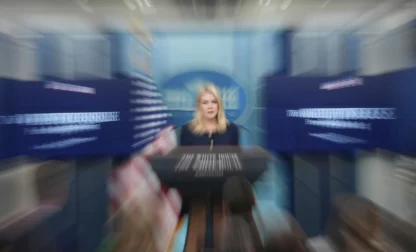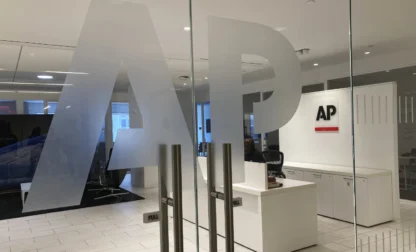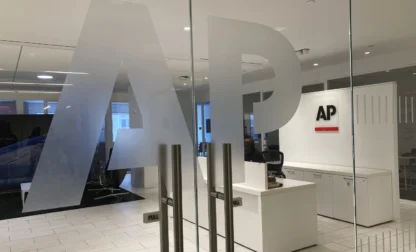By DAVID BAUDER, The Associated Press
The executive director of an Israeli media watchdog organization says it was simply “raising questions” by publicly wondering whether Palestinian photojournalists who documented the Oct. 7 Hamas attack in Israel — and sent some of the first images of its aftermath to a watching world — had been tipped off in advance that it would happen.
The report by the group HonestReporting, however, had serious ramifications at a time of war.
It led two Israeli politicians to suggest the journalists be killed. Several of the world’s biggest news organizations — CNN, The New York Times, The Associated Press and Reuters — issued statements Thursday denying they knew about the attack ahead of time.
HonestReporting, which describes itself as an organization devoted to fighting media disinformation about Israel and Zionism, did not specifically make those accusations against the companies. It did, however, suggest that freelance photographers whose work from that day was used by the outlets might have known.
“Is it conceivable to assume that ‘journalists’ just happened to appear early in the morning at the border without prior coordination with the terrorists?” HonestReporting wrote on its website Wednesday. “Or were they part of the plan?”
Photos that moved that day showed Hamas escaping to Gaza with kidnapped Israeli citizens, Hamas attackers climbing on a disabled Israeli tank, images of Hamas invaders outside a kibbutz and buildings burning.
Gil Hoffman, executive director of HonestReporting and a former reporter for The Jerusalem Post, admitted Thursday the group had no evidence to back up that suggestion. He said he was satisfied with subsequent explanations from several of these journalists that they did not know.
“They were legitimate questions to be asked,” Hoffman said. Despite the name “HonestReporting,” he said, “we don’t claim to be a news organization.”
The New York Times said that Yousef Masoud, whose photographs of an Israeli tank captured by Hamas were used by the newspaper and AP, did not know. His first photographs that day were filed 90 minutes after the attack began.
Reuters used pictures credited to Mohammed Fayq Abu Mostafa and Yasser Qudih, two freelancers it had no prior relationship with. Its first photo was published more than 45 minutes after Israel said gunmen had crossed the border, the news agency said.
It was clear that morning from the first launch of missiles from Gaza into Israel that something serious was happening, said Julie Pace, senior vice president and executive editor of the AP.
“It was a fast-moving development in a very small territory,” Pace said.
“We carried out a very typical news-gathering process when a big event, a big moment, is happening and we need to figure out what it is and inform the world about it,” she said. Part of that involves fielding calls from freelancers who have photos and video to offer.
Besides Masoud, the AP used photos that day credited to Hassan Eslaiah, Ali Mahmoud and Hatem Ali.
The Times said the accusation that anyone at the newspaper had advance knowledge of the attacks or accompanied Hamas was “untrue and outrageous,” and put journalists in Israel and Gaza at risk. Rushing into danger in conflict zones already puts freelance photojournalists at risk, the newspaper said.
“This is the essential role of a free press in wartime,” the Times said in a statement. “We are gravely concerned that unsupported accusations and threats to freelancers endangers them and undermines work that serves the public interest.”
Israeli politicians Danny Danon, Israel’s former U.N. ambassador, and former defense minister Benny Gantz condemned any journalists who knew about the attacks ahead of time. Any who stood idle while killings took place that day “are no different from terrorists and should be treated as such.”
At least 39 journalists and media workers have been killed in the conflict so far, according to the Committee to Protect Journalists. That’s the deadliest monthlong period for journalists since the committee began keeping track in 1992.
For journalists to have known about the Hamas plans in advance presents a complicated ethical question. Journalists have often been embedded with military forces in the past, and keep potential plans secret, said Nina Berman, a professor and expert in photojournalism ethics at Columbia University.
Hoffman said that “some people with an agenda” had made HonestReporting look bad. “They acted as if we were stating facts instead of asking questions,” he said.
With much attention now on Israel’s military action in Gaza, Hoffman said HonestReporting wanted more attention focused on the Oct. 7 attacks, which resulted in an estimated 1,400 deaths in Israel.
“We raised questions and it led the media outlets to clarify the truth,” he said. “Great, that’s what we do.”
Both AP and CNN said Thursday that they would no longer work with Eslaiah, one of the freelance photographers. HonestReporting posted a photo of Eslaiah being kissed by Hamas leader Yehia Sinwar.



